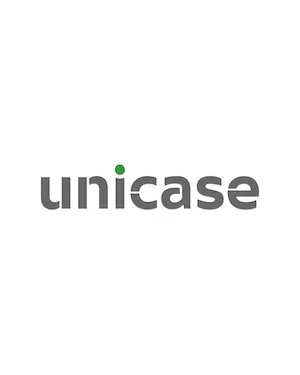- within Energy and Natural Resources topic(s)
- in Asia
- in Asia
- in Asia
- in Asia
- with readers working within the Retail & Leisure industries
- within Energy and Natural Resources, Tax and Finance and Banking topic(s)
The world is witnessing a globally-intensive trend towards renewable energy sources (RES) development. Major international organisations (hereafter we will refer to such organisations as the “Investors'') are permanently researching conditions towards the payback of RES projects. With the aim of attracting finance to their economies, countries are considering, discussing and making appropriate changes to create favourable conditions for Investors. This trend has not bypassed Kazakhstan, where the number of renewable energy projects is growing rapidly. As a result, the renewable energy law is constantly being improved in Kazakhstan.
Given the prevailing features of domestic legislative regulation of RE project payback, the issue of tariff indexation plays a special role in establishing the economic attractiveness for Investors. The attraction has many aspects, including the prompt repayment of invested (in particular, borrowed) funds. Generally speaking, Power Purchase Agreements (PPAs) in Kazakhstan are concluded in the national currency - Tenge, while the borrowed funds and imported equipment are in US dollars. Therefore, Investors bear the risks associated, inter alia, with the high volatility of the Tenge/US dollar exchange rate and, therefore, indexation issues have a particularly important economic role. The tariff indexation is regulated by the Resolution of the Government of the Republic of Kazakhstan dated March 27, 2014 No. 271 "On approval of the Rules for determining fixed tariffs and marginal auction prices" (the “Rules”).
There have been many ideas discussed and proposed by various RES players and associations to amend the provisions of the Rules, including tariff indexation formulas, timing of indexation application, objects on the basis of which indexations are applied, etc. At this point, we invite you to familiarise yourself with the latest draft of amendments to the Rules (the “Draft Rules”).
Key proposed amendments to the Draft Rules are (i) introduction of a one-time indexation of auction prices for the construction period, and other technical details on the timing of application and calculation (ii) return of the auction price limits to the 2014 price indicators approved by the Government of the Republic of Kazakhstan Resolution No. 645 of 12 June 2014, and (iii) introduction of an option to select the object to be indexed (consumer price index or difference between the exchange rate of tenge to Below, we consider each proposal separately.
One-time indexing
One-time indexation refers to the indexation for the construction period from the moment the purchase agreement is concluded and until the start of the supply of electricity to the authorised body. This is notable that the current wording of the Rules does not provide for the indexation of auction prices for the construction period of RES projects. It is believed that due to the proposed formula for calculating the one-off indexation, the Investors can cover their risks, including the risks associated with the volatility of the national currency exchange rate, as this risk is one of the main financial risks (for example, electricity purchase agreements (PPAs) are concluded in tenge, while payments for imported equipment are made in US dollars).
Period of application and calculation of one-time indexation
In terms of determining the moment “when to apply the one-time indexation and its calculation”, the Draft Rules provide for the following. In accordance with paragraph 21 of the Draft Rules, the application of a one-time indexation of auction prices should be made from the date of comprehensive tests, in which the release of electricity into the unified electric power system of the Republic of Kazakhstan, recorded by the automated system of commercial accounting of electricity is carried out. And the calculation should be made within 30 calendar days from the first date of the comprehensive tests. That is, the actual application and calculation is carried out before the start of operation of the RES facility.
Limit auction prices
The current version of the Rules determines the maximum auction prices based on the results of previous auctions at the maximum price of the winner. That is, for example, if the previous winner won at a price of 12 tenge per kWh, then the next limit price of the cannot exceed this amount. At the same time, in accordance with the proposed wording of paragraph 16 of the Draft Rules, the maximum auction prices will have to be determined at the level of fixed tariffs established by the Decree of the Government of the Republic of Kazakhstan dated June 12, 2014 No. 645 (the “Resolution”).
Whereas the Resolution set the first fixed ceiling price for electricity generated, for example, from the Solar Energy Station (SES) at KZT 34.61 per kWh, the current ceiling price is set at KZT 12.87 per kWh. That is, the actual proposed increase in the SES auction ceiling price is almost three times higher.
In addition, these price ceilings set by the Resolution will also be applied for the purposes of calculating the one-time and annual indexation formulas. It is believed that the proposal will have a significant impact on the payback rate of RES projects, but it is also expected to increase the end-user electricity tariff prices. Therefore, the issue of the Government's regulation of both Investors' and End-Users' interests remains open.
Consumer price index or exchange rate difference
Starting from 2022, it is proposed to provide Investors with a mechanism for choosing the object of annual indexation of auction prices. Investors have the following choices:
- or apply indexation based on changes in the consumer price index for the previous 12 months before October 1 of the year of indexation (for more details, see footnotes);
- or apply indexation to the difference in exchange rate changes of the Kazakh tenge against the US dollar for the same period (more details in the footnotes).
In developing the above proposals, the Draft Rules were guided by the following financial risks of the Investors:
- Increase in capital costs in case of requirements for energy storage systems ;
- High exchange rate volatility of the tenge against the US dollar and other currencies ;
- Lack of currency risk hedging mechanisms;
- Currency risks when attracting long - term loans in local and foreign currencies .
Features of choice
It is noteworthy that the choice must be made on the basis of the decision of the applicant sent by an official letter to the settlement and financial center 30 calendar days before the date of the annual indexation. In this case, the choice of indexation is carried out once for the entire period of the purchase agreement. Taking into account the fact that electricity purchase agreements are usually concluded for long periods, the question of which of the above options will be more economically beneficial for investors remains open.
First use of auction price indexing
In connection with the proposed introduction of a one-time indexation, the draft Rules propose to establish a time frame for applying the first indexation of auction prices, namely not earlier than one calendar year after the application of a one-time indexation. The question of implementing this norm without temporary losses for investors in practice remains open, since this norm does not establish a deadline for applying the first indexation.
The provided version will allow managing the risk of interest rate volatility and to some extent increase the attractiveness of long-term loans in tenge. This, perhaps, is confirmed by the decision taken by the National Bank of the Republic of Kazakhstan on April 25, 2022 to increase the base rate to 14%.
Conclusion
It is believed that the proposed changes to the Rules are aimed at creating and improving an economic favorable climate for Investors. With the introduction of a one-time indexation, Investors can cover their risks of tenge volatility by the time the construction is completed and the RES facility begins to operate. The transition to the price indicators for electricity from renewable energy facilities established in the Decrees, to increase price barriers to the marginal auction prices, and, accordingly, it is expected that the percentage of payback of renewable energy projects over time will increase. Providing the Investor with a choice of an object from which he would express a desire to carry out indexation awaits its practical application. Which of the objects will be more profitable will determine the time, as well as the question of whether these changes will be made at the legislative level to the Rules, we will find out soon.
The content of this article is intended to provide a general guide to the subject matter. Specialist advice should be sought about your specific circumstances.
[View Source]


